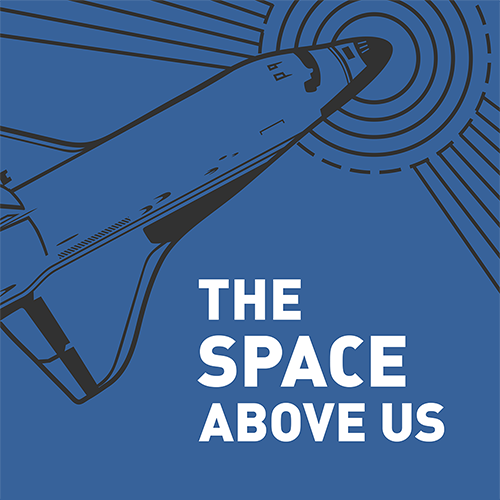Episode 139: STS-68 - Deja Vu and Big Kaboom (SRL-2)
Table of Contents
No, it’s not a glitch in the Matrix, we’re flying the same experiment on the same shuttle! Don’t worry, we still find plenty to say. Oh, and Jupiter’s about to explode, so that’s pretty cool.
Episode Audio #
Photos #
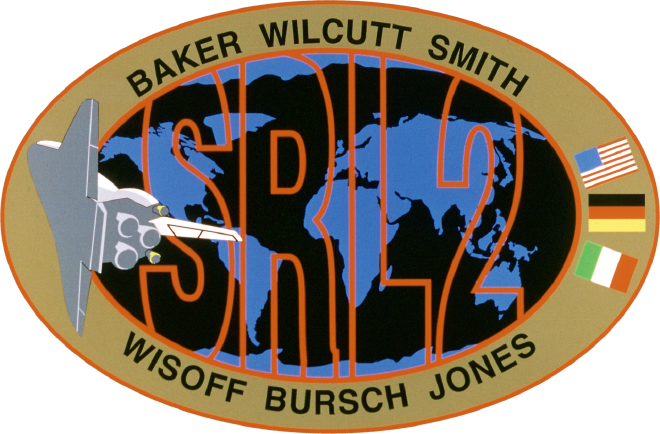
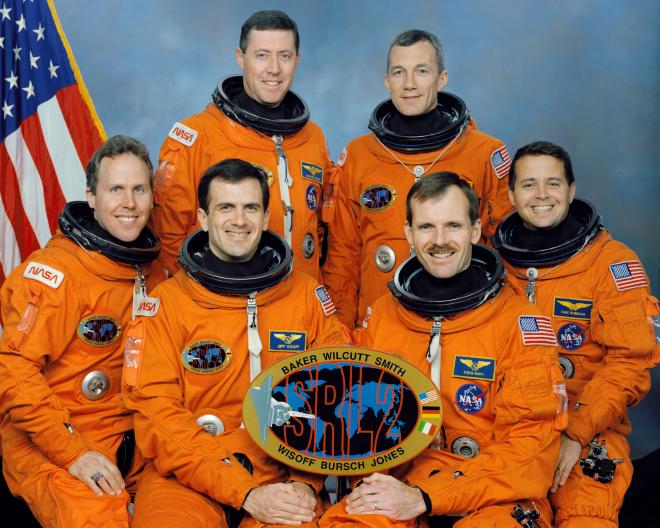
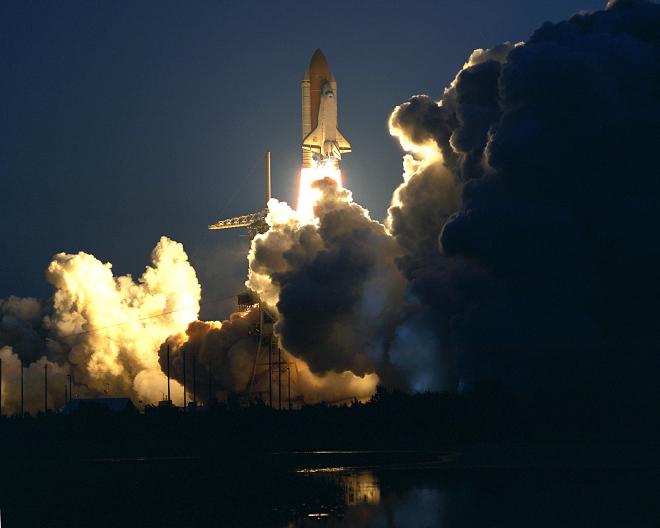
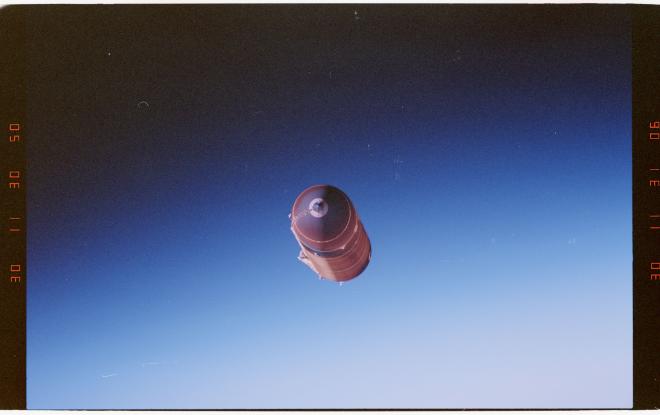
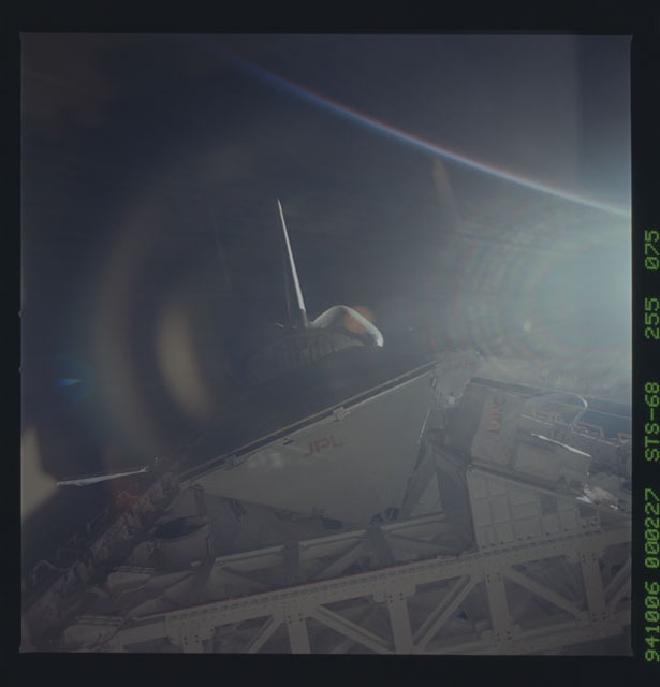
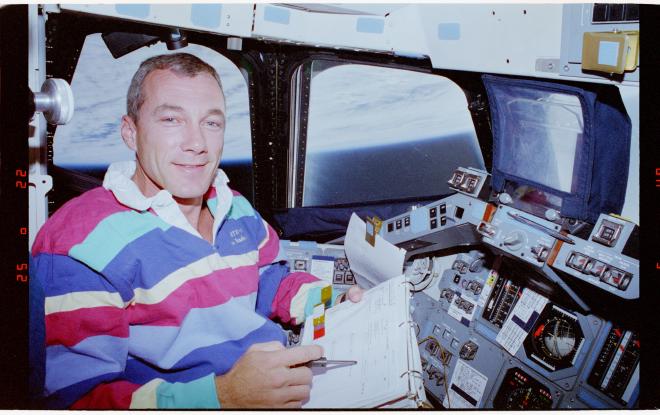
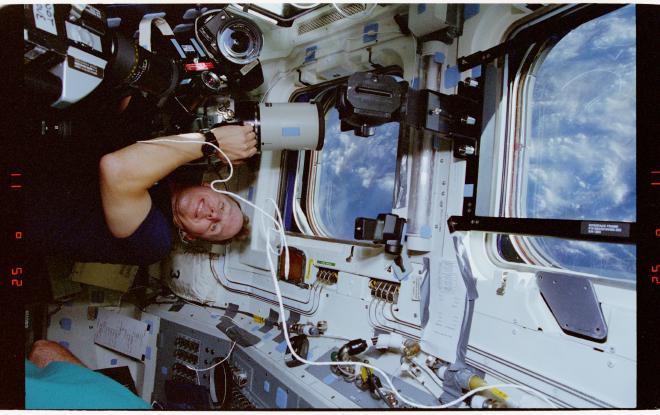
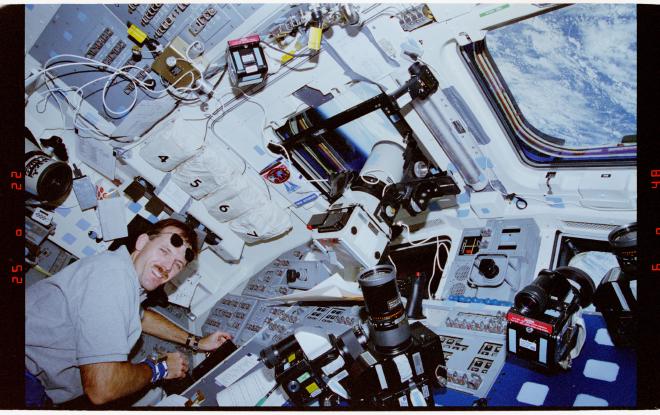
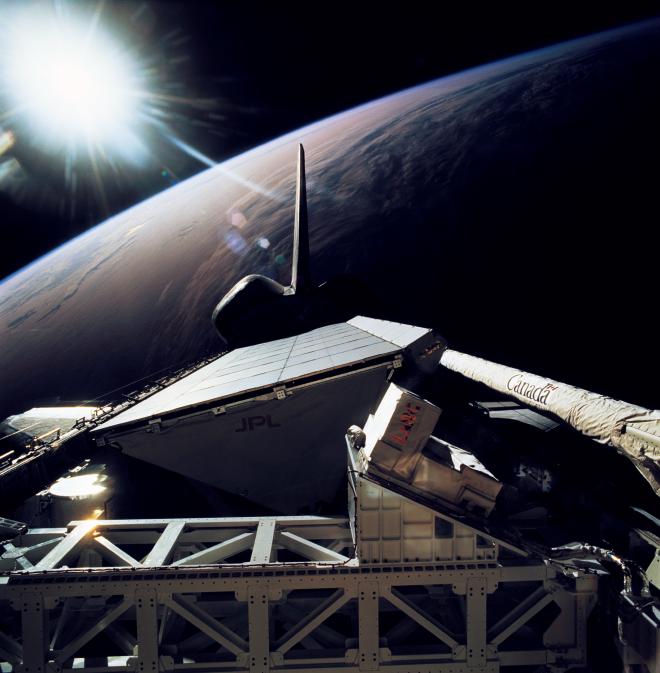
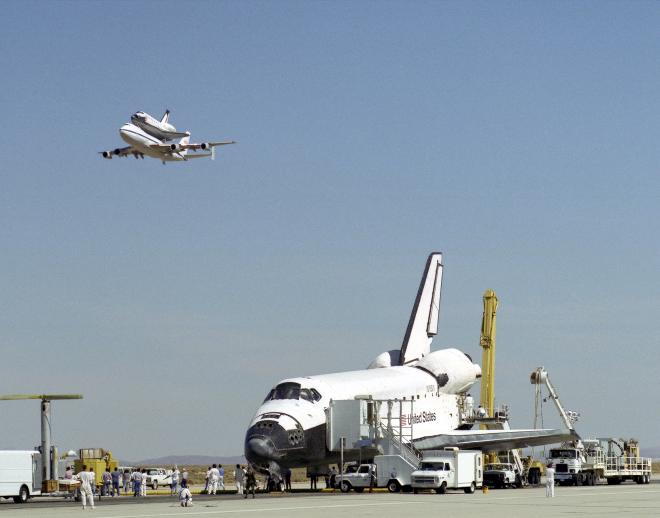
For more photos, head over to our friends at Wikiarchives.space: https://wikiarchives.space/index.php?/category/860
RSLS Pad Abort Video #
A short video showing the engine ignition.. and subsequent abort on STS-68.
Post-Flight Presentation #
If you’d like to see the mission in motion you can check out the post-flight presentation here:
Mission Highlights Resource Tape #
Ever wanted to watch almost an hour of B-roll from STS-63? Well now’s your chance!
Transcript #
NOTE: This transcript was made by me just copying and pasting the script that I read to make the podcast. I often tweak the phrasing on the fly and then forget to update the script, so this is not guaranteed to align perfectly with the episode audio, but it should be pretty close. Also, since these are really only intended to be read by myself, I might use some funky punctuation to help remind myself how I want a sentence to flow, so don’t look to these as a grammar reference. If you notice any egregious transcription errors or notes to myself that I neglected to remove, feel free to let me know and I’ll fix it.
Hello, and welcome to The Space Above Us. Episode 139. Space Shuttle flight 65, STS-68: Deja Vu and Big Kaboom
Last time, we rode along for the free-flying mission of STS-64. Along with a cutting edge LIDAR system, Space Shuttle Discovery’s 19th flight saw the deployment and retrieval of the SPARTAN experiment platform, as well as the deployment and retrieval of Mission Specialists Mark Lee and Carl Meade. Their evaluations of the SAFER emergency rescue jetpack both opened a future where astronauts that became separated from space stations could quickly rescue themselves, and closed a chapter by marking the final untethered EVAs. At least at the time of this recording.
While STS-64 chalked up a number of firsts, today’s flight miiight seem a little familiar. That’s because today we’ll be flying on Space Shuttle Endeavour, and once more carrying into space the Space Radar Laboratory. Flying SRL into orbit a second time would both return a wealth of data on its own, as well as literally giving scientists a new dimension with which to better understand the data they already had. Let’s meet the crew.
Commanding this mission was Michael Baker, aka Bakes. When Bakes last flew, he was establishing Disco Medium-Earth-Orbit, deploying the high-precision disco-ball that was LAGEOS II. This is his third of four flights.
Joining Baker at the front of the flight deck is today’s pilot, Terrence Wilcutt. Terrence Wilcutt was born on October 31st, 1949 in Russellville, Kentucky. So, born on Halloween and now wearing the orange pumpkin suit, that’s fun. Wilcutt is one of those rare astronauts that did not grow up with a burning passion to fly in space. Instead, after earning a bachelor’s in Mathematics, he joined the Marine Corps with an eye on learning how to fly and becoming a test pilot. After flying through the skies of Hawaii, Japan, Korea, and the Philippines, he was sent to the US Navy Test Pilot School in Patuxent River, Maryland. Wilcutt would go on to log nearly 7000 hours flying over 30 different type of aircraft. Eventually, the role of astronaut was suggested to him and Wilcutt came to think of it being as similar to his test pilot roles but just turned all the way up. So he applied to NASA, went through the arduous interview process, and in 1990 was selected as an astronaut. This is his first of four flights.
Moving on to the mission specialists, we meet our other rookie on this flight, Steven Smith. Steven Smith was born.. actually I’m not sure when. His official NASA biography doesn’t list the date or place of his birth, other than saying he’s a native of Phoenix, Arizona, so I’m assuming he’d rather that we didn’t know. Since we don’t actually need to know, I’m not going to bother tracking it down elsewhere. I’m drawing a weird amount of attention to this because I think this is going to be my policy going forward. If an astronaut’s birth date and place aren’t in the official NASA biography, I’m just going to skip it, so don’t send me an email saying I forgot! Anyway, Steven Smith was born some time in the 20th century on Earth, and soon he’ll be leaving it. But first he went to Stanford and earned a Bachelor’s degree and a Master’s degree in Electrical Engineering, throwing in a Master’s in Business Administration for good measure. Smith was selected as an astronaut in 1992 and was actually the first member of his class to be assigned a flight, but thanks to a little oopsy we’ll talk about in a minute, Jerry Linenger was the first actually fly. That’s alright though, Smith’s space career will eventually see him flight four times and perform seven EVAs, so it’ll be worth the wait.
Sitting in the middle of the flight deck was Mission Specialist 2 and our Flight Engineer for today: Dan Bursch. Dan Bursch’s first flight was STS-51, which we know pretty well thanks to another Dan. That’s because STS-51 deployed the ACTS spacecraft using the TOS upper stage that we heard so much about from Dan Tani. STS-51 is also notable for experiencing an RSLS abort on the pad, with the main engines lighting up before quickly being shut down again. And I definitely didn’t mention that for any reason in particular. This is his second of four flights.
Continuing on, Mission Specialist 3 was Jeff Wisoff. When we last saw Wisoff he was crawling around the payload bay with David Low, helping to secure the antennas on the EURECA spacecraft so that it could be safely retrieved and loaded into the payload bay. Unfortunately for Wisoff, there are no EVAs on this flight, so he’ll just have to enjoy his time in the crew cabin. This is his second of four flights.
You might be forgiven for doing a double take when you see Mission Specialist 4 on this flight. That’s because we just saw him only two flights ago! Yes, just like the Space Radar Laboratory was getting its second flight in a row on Space Shuttle Endeavour, so was Mission Specialist 4, Tom Jones. How did he earn this unusual honor? Well, the Jet Propulsion Laboratory, who had created the Space Radar Laboratory, had originally hoped to fly some of their own engineers as Payload Specialists, accompanying their experiment into space. NASA Johnson had insisted that Mission Specialists were more than capable of taking care of SRL so that plan was shot down. But as a compromise, JPL asked that at least one person from the first flight fly on the second flight as well. I would argue that Jones’ strong performance on STS-59, along with his background in remote sensing certainly made him a solid pick for the second flight, but in his book Skywalking, Jones sort of downplays that. As he put it, he was the only person available. The other crew members had either flown enough in recent years that they deserved a break from training, were retiring, or were tackling other challenges in the Astronaut Office, leaving only Jones.
The back to back flights meant that Jones basically only had a day or two to relax between the two missions. In fact, he was still flying on STS-59 when he received a friendly note from the rest of the STS-68 crew gently reminding him quote “Best of luck. Don’t forget you start sims with us next week. - Your STS-68 Associates”. Oh well. What better training can there be than literally flying the same mission just a few months earlier? This was Jones’ second of four flights.
JPL had originally hoped to fly the Space Radar Laboratory 2 mission around six months after SRL-1. This would be the ideal way to look for seasonal changes across the planet with the advanced radar system. But precisely scheduling shuttle flights can be a tricky business, so it was only four months after STS-59 landed that the crew of STS-68 climbed aboard their spacecraft, on August 18th, 1994. In fact, it had only been 121 days since Endeavour was last in orbit. That meant that if STS-68 was able to successfully light this candle today, Tom Jones would break the record for shortest time on Earth between orbital flights. The current record holder in our timeline was Steve Nagel who landed on STS-51G and was only home for one hundred and twenty eight days before lifting off on STS-61A. Spoiler alert: Jones does not get the record, but we’ll get to that in a sec.
As the hours counted down towards liftoff, things proceeded smoothly, and Jones and Wisoff killed some time by playing rock paper scissors. Before you could say “rock beats scissors”j it was time to spin up the APUs, close and lock their visors, and initiate O2 flow. The engines roared to life.. and then whined to a halt. With only 1.9 seconds until Solid Rocket Booster ignition, a silent Space Shuttle Endeavour swayed on the launchpad as a cloud of steam drifted away from the flame trench. For the fifth time, the space shuttle computers had executed a Redundant Set Launch Sequencer abort, canceling the liftoff in the precious few seconds between main engine ignition and lighting the SRBs. After a few frantic moments of running through procedures and checking sensors, it was determined that the engines had safely shut down and that there were no invisible hydrogen fires lurking about the pad, so no need to hold your brooms at arms length.
As scary as an RSLS abort is, it’s orders of magnitude less scary than what would have happened if the SRBs had a chance to ignite. If the boosters had ignited and then there was a main engine problem, Commander Baker and his crew would have held the dubious distinction of becoming the first astronauts to execute a Return to Launch Site abort. These days, with Falcon 9s flying out of Florida on a regular basis, the letters “RTLS” are a cause for celebration. That means a Falcon 9 first stage is going to fly back to Florida and everyone can watch it land! But in the shuttle era, those same letters would send a chill up the spine of any spaceflight professional or enthusiast. That’s because the solid rocket boosters cannot be stopped once they are lit, meaning Endeavour would be going somewhere fast. But since two main engines was insufficient to make it to orbit, or fly around the Earth once and execute a once around abort, or even limp across the Atlantic Ocean to an emergency runway, Endeavour would have no choice but to, as the name implies, return to the launch site. The crew would ride out the SRBs, separate, and then perform a hair-raising flip maneuver while the remaining SSMEs kept burning. This would help them gain more altitude while also nulling out the horizontal velocity carrying them away from the Kennedy Space Center. Eventually their course would reverse and they would have to fly back through their own exhaust plume. After a sporty maneuver to separate from the external tank, Endeavour would theoretically glide to a safe landing at the Shuttle Landing Facility and justify all of those launch scrubs called due to high crosswinds at the SLF. Really though, astronauts who speak of the RTLS abort seem less than fully confident that it could be executed safely. This also gives me a great chance to recount one of my favorite John Young moments. An engineer was asking Young for feedback on what should be displayed on the various screens on the orbiter flight deck during an RTLS abort. Young said that he didn’t care because in the event of an RTLS abort he would be covering his eyes and screaming. Oh John Young.
And actually, this is really taking us astray, and breaking my general guideline of trying not to mention things happening now, as I record, for the sake of folks listening later but.. Mike Massamino and Garrett Reisman, two astronauts who have yet to enter our narrative, have a new podcast called “2 Funny Astronauts” that’s really worth checking out. They cleverly picked their podcast name to start with the numeral two, ensuring it’s at the top of everyone’s show list, unlike some people who decided to start their space podcast title with a T, ensuring that it’s lost among a see of “The”s. Anyway, they have some pretty great stories about John Young so it’s definitely worth a listen. 2 Funny Astronauts, check it out.
Meanwhile, during that whole little detour, Endeavour has been rocking back and forth on the pad in the aftermath of an RSLS abort. So what happened? The culprit turned out to be a slightly out of bounds temperature in the high pressure oxidizer turbine on engine number 3. The temperature was only about 10 degrees Celsius higher than the limit, but when you’re spinning things up past 28,000 revolutions per minute, it’s best to be a little conservative. The whole crew would have groaned, knowing that this guaranteed a lengthy delay, but none more so than Dan Bursch. His launch to launch-attempt ratio was 1 to 5 now which isn’t great. But even less great is that STS-51 also aborted between engine ignition and liftoff. And since STS-68 was the last mission to experience this, this makes Dan Bursch the only astronaut to sit through the harrowing experience twice. Bursch lamented that nobody would want to come to any of his launches ever again!
Endeavour was rolled back to the VAB to have its engines replaced, giving STS-64 a chance to cut in line, but we heard all about that last episode. Since that’s going to take a few weeks to sort out, let’s do that Galileo check-in that I promised during the STS-65 episode.
Galileo, of course, is the Jupiter-bound planetary orbiter that we launched on Space Shuttle Atlantis way back on STS-34. With all of our shuttle flights lasting only a week or two, I thought it’d be fun to regularly check in with Galileo, which as an uncrewed interplanetary mission had a wildly different time scale. Just to remind you, in our podcast timeline, we just sat through the STS-68 scrub in August of 1994. Galileo was sent on its way in October of 1989. Since then it flew by Venus in February of 1990, Earth in December of 1990, passing Gaspra in October of 1991 marking the first closeup encounter with an asteroid, Earth again in December of 1992 and then the asteroid Ida, with its tiny moon Dactyl, in August of 1993.
That was a lot of dates and numbers. But I’m just about to make it worse. In March of 1993, just a few weeks before ATLAS 2 flew on STS-56, three astronomers were taking some pictures. Carolyn and Eugene Shoemaker, along with David Levy, were operating the 40 centimeter Schmidt telescope at the Palomar Observatory. A couple days later, after developing the photographic plates, Carolyn Shoemaker noticed something unusual. A long line of objects were moving together near Jupiter. Further analysis revealed it wasn’t just near Jupiter, it was orbiting Jupiter, and given its distinctive fuzzy appearance, was most likely a comet. The Shoemakers and Levy were apparently just comet-finding machines, because they had done this eight times previously, making this comet Shoemaker-Levy 9.
The obvious immediate question was what was up with this comet that was broken up into a long string of fragments. Running the physics backwards, it was observed back in July of 1992, it would have passed within a mere 21,000 kilometers above Jupiter’s swirling clouds. This is so close that it’s inside something known as the Roche limit. Once a sizable celestial body passes within the Roche limit of a planet, it’s not going to remain a celestial body for long. The gravitational forces differ so much between one part of the body and the other, that it overcomes the structural integrity of the object and it breaks apart. You can think of it like the gravitational gradient stabilization we’ve seen on LDEF, except so extreme that the object in question is torn into pieces.
OK, so that’s pretty cool. This was the first comet to be observed orbiting Jupiter, and while we didn’t get to see it happen, Jupiter had torn it apart. But what was really cool was that while running the clock backward showed that Shoemaker-Levy 9 had come so close to Jupiter that it broke apart, running the clock forward showed that in a little over a year, it was going to come a lot closer. In fact, it was going to crash right into it.
This was a really big deal. Astronomers and planetary scientists had never before had a chance to observe a planetary impact as it was happening, and they had months to prepare. Telescopes all around the Earth would be slewed towards Jupiter to observe the series of impacts, expected late in July of 1994. But not only that, telescopes above the Earth would be involved as well. Hubble, Voyager, Ulysses, and oh hey, what’s this spacecraft cruising right up to Jupiter, perfectly situated to observe the impacts? None other than Galileo. In fact, since the comet would be impacting on the night side of Jupiter, which isn’t visible from the Earth, it would be the only instrument to watch the impacts themselves. Between July 16th and July 22nd, 1994, while Space Shuttle Columbia whizzed around the Earth on STS-65, 21 giant chunks of comet Shoemaker-Levy 9 pummeled the planet Jupiter.
The cometary fragments impacted the gas planet at a staggering 320,000 kilometers per hour, over 11 times faster than the space shuttle in low earth orbit. That’s fast enough to travel from San Francisco to Washington DC, across the entire United States, in about 44 seconds. From Rome to Paris in just over 12 seconds. Each fragment exploded into massive fireballs that were several miles across and hotter than the surface of the sun, throwing towering plumes of debris up above the planet. In the moments following each impact, Jupiter’s entire brightness would increase by over ten percent, with one impact flashing to twenty percent. For weeks after the event, dark splotches bigger than the Earth could be seen on Jupiter’s face.
The event was a major breakthrough for planetary science, giving us a natural experiment to study both comets and Jupiter, as well as serving as a stern reminder that yes, things do hit things out here. There’s a quote that I like, which I haven’t been able to find the source of, that says “Asteroids are nature’s way of asking how that space program’s coming along.” Well, it turns out that ours is going pretty well, and we were lucky that Galileo was in position to witness this epic event. Our next check-in will come in about a year, when Galileo sets up for a considerably smaller impact.
Alright, that was a pretty big Galileo update for a podcast about human spaceflight, but I enjoy our check-ins. Plus, since STS-68 is basically a carbon copy of STS-59, almost down to the meter, we’re going to have a big of a shorter episode anyway.
Now that the engine problem has been fixed, let’s check back in. Ah, it’s been six weeks since the first launch attempt, and once again Endeavour and the STS-68 crew are on the pad and ready to go. This time, the count proceeded smoothly, and on September 30th, 1994, at 7:16 AM Eastern Time, Space Shuttle Endeavour sailed through a mostly uneventful ascent. JPL had originally been hoping to re-fly SRL six months after the first flight, but was going to have to settle for only four months. Well, thanks to engine number three, JPL got their wish after all, because it just so happens that the new launch date was 5 months and 21 days after STS-59 landed. Between Galileo being in the right place at the right time and this fortuitous engine problem it seems that JPL is having a lucky streak! Must be the peanuts.
I say the ascent was mostly uneventful, since soon after arriving on orbit, the crew noticed that a big chunk of a tile outside one of the overhead windows was missing. To solve the mystery of where it went, they only had to peer a little further back in the payload bay and notice the cracked tile on one of the OMS pods. It seems a sizable chunk of this window tile had come loose and slammed right into the OMS pod. Thankfully, both areas were not subjected to extreme temperatures, and the damaged tiles would do the job no problem. Still though, it was yet another reminder that the orbiter’s thermal protection system is more fragile than it seems.
OK, so, setting aside the tile issue, what’s in the payload bay? The primary payload is literally the same thing as STS-59. The Space Imaging Radar C, which we’ll call SIR-C, and the X-Band Synthetic Aperture Radar, which we’ll call X-SAR. Together they make up the Space Radar Laboratory. There’s also the Measurement of Air Pollution experiment, or MAPS, keeping an eye on worldwide carbon monoxide emissions, but our focus will be on SRL.
For rev after rev, the radar would emit radar signals in various frequencies and polarizations, collecting them after their interaction with the Earth. In nineteen so-called “super sites”, scientists on the ground took their own measurements of both the local conditions as well as the radar beaming down from Endeavour, helping to calibrate the experiment and yielding more accurate data. Just like last time, this generated piles of data so large that they’re still impressive today, let alone in 1994.
But.. what’s different? Why are we doing this again? The orbiter is the same, the instrument is the same, the orbit is nearly the same, and Tom Jones is still here! The difference is.. the Earth! It’s been six months! Scientists would now be able to compare the new data to the original data and see just how things have changed between seasons. Since the radar can be tuned to look for stuff like moisture content, vegetation coverage, snow pack levels, rainfall, and more, seeing how that all changes over time yields a really potent set of data.
Now, you might be wondering what the big deal is. Couldn’t a normal earth observation satellite track stuff like vegetation changes just by looking at how much green there is? Well, maybe. But since SRL controls both the collection and transmission of the radio waves bouncing off the Earth, much more granular detail can be inferred. As I mentioned on the STS-59 episode, they can even tell the difference between how many tree trunks there are and many tree branches there are by just switching the polarization. But by flying again, we’re actually taking things one step further.
For several days of this mission, Endeavour flew almost precisely the same orbit that it flew on STS-59. And when I say precise, I mean it. There were periods when Endeavour was only about 10 meters away from where it was only six months ago. If I’m being honest, I have to admit that I have no idea how this works, but scientists were able to take the data from the last mission and combine it with the data from this mission, ten meters away, and perform interferometry on it. Yes, it’s the same thing we used to precisely measure the Hubble mirror. Don’t worry, there are no reflective null correctors in sight.
By flying in tight formation with itself, six months later, Endeavour was able to reveal the ever-changing nature of the face of our planet. Tiny shifts of landmasses due to earthquakes, new fans of debris from landslides, bulging slopes of volcanoes, all of this was laid bare by the Space Radar Laboratory. It was also able to precisely map the height of huge swaths of land beneath the orbiter. A vertical accuracy of 15 meters may not sound all that impressive at first, but it’s not bad for something being done at Mach 25 and without any surveyors on the ground. This height checking was great for friendly things such as mapping, agriculture, and geology, but I’m sure the DoD was also happy to use it for less friendly things, such as planning routes for cruise missiles. Once again, it seems data is a double edged sword.
One of the benefits of this space based radar system that I mentioned was the ability to track the subtle movements of volcanoes. When an active volcano is getting ready to erupt, massive amounts of magma come bubbling up just below the surface. This can cause the side of the volcano to literally bulge out. If you look up photos of Mt. St. Helens shortly before its eruption in 1980, the bulge on its upper slopes is clearly visible, and kind of freaky. It’s bizarre to see something as big as a mountain move like that. With precise measurement, this bulge can be tracked and potentially lead to life-saving forecasts of volcanic activity. But typically, that measurement would have to be done using sensors on the ground, placed by vulcanologists studying the volcano. A space based system would allow scientists to regularly check for volcanoes that were expected to erupt soon, as well as thousands of others that maybe are ready to blow but nobody’s noticed yet.
The reason I bring this up is that partway through the mission, the crew were surprised to suddenly see a large ground feature that hadn’t been there on the previous pass. A volcano in Kamchatka, in the north-east of Russia, had begun spewing ash into the air. The crew gathered to take photos as they passed overhead, noting that the ash spread out as it approached the stratosphere, creating a vast cloud over the Pacific Ocean. And once again, the radar system proved its worth by peering through the dry ash to take a peek at the structure of the mountain below, something no traditional optical satellite could do. Pretty cool.
The mission was extended by a day thanks to all systems working well and resources being used at the expected rate. And then it was extended just a bit more when the first landing attempt at the Kennedy Space Center was waved off. Since the weather didn’t look like it was going to improve any time soon, the decision was made to just land at Edwards rather than dragging things out for another day. The payload bay doors were closed, Endeavour flipped around and fired up the OMS engines, slowing down by only 260 kilometers per hour, only about 1 percent of its total speed. But that was enough to begin the long journey back down to Earth. Tom Jones and Steve Smith lingered on the flight deck for a bit in order to enjoy the plasma light show, before scampering downstairs to strap in for the rest of reentry. After 11 days, 5 hours, 46 minutes, and 8 seconds, Endeavour’s seventh flight was in the books.
While JPL had originally hoped for a Space Radar Laboratory three, it turned out to not be in the cards, so with this flight, we bid farewell to the giant synthetic aperture radar. Between STS-59 and STS-68, the radar system was a resounding success. It not only returned a massive amount of data that no other NASA satellite could generate, it proved just how useful synthetic aperture radar could be for earth observations. I’m not entirely sure why we never got a dedicated radar earth observation satellite, or maybe I just missed it, but I can say that the benefits of this complex and data-heavy technique were not missed by the space community. These days, with several commercial operators flying smaller SAR spacecraft, and with several European radar satellites in orbit, the dream of SRL lives on.
Next time, we’ll keep the repeat payload train rolling by revisiting some other payloads we’re pretty familiar with: ATLAS and SPAS. But by trying out a new rendezvous approach to SPAS, we’ll prove that you can teach an old payload new tricks.
Ad Astra, catch you on the next pass.
